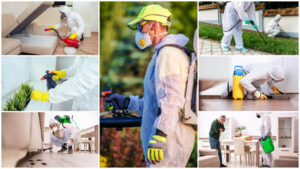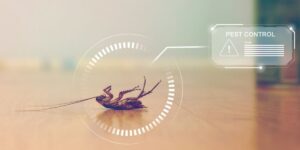What Is Pest Control?
Various Types Of Pest Control
Do you struggle with pests at home?
Let's take a look at the various types of pest control methods available:
Integrated Pest Management (IPM)
Integrated pest management is a thorough and sustainable method that controls and avoids insect infestations, particularly in agricultural settings. Integrated pest managementuses various pest management techniques, including cultural, biological, and physical controls, rather than chemical pesticides.
Biological Pest Control
Chemical Pest Control
While organic treatments can effectively control pests, there may be situations where they don’t produce the desired results. In such cases, people may opt for chemical pest control methods.
For usage in residential and commercial properties, thousands of chemical products are on the market. These products have various types, including solid, liquid, and aerosol forms.
Certain chemicals in these products can harm the environment and human health, so it’s crucial to be aware of them.
Common Pests
Here are some examples of each:
Insects
- Ants
- Cockroaches
- Termites
- Bed bugs
- Fleas
- Ticks
- Mosquitoes
- Flies
- Bees and wasps
- Moths
- Spiders
- Mites
- Rats
- Mice
- Squirrels
- Chipmunks
- Groundhogs
- Voles
- Shrews
Rodents
- Pigeons
- Sparrows
- Starlings
- Seagulls
- Woodpeckers
- Geese
- Ducks
- Swallows
Top-Notch Pest Control Technique
Prevention
- It’s crucial to cover any cracks and holes outside the building, especially access points for pipes and utilities, to keep pests and mice out of your home.
- Keeping tree branches and shrubbery trimmed and away from the house can also help prevent pests from accessing the building.
- Proper ventilation and moisture control in basements, attics, and crawl spaces can discourage pests from nesting in these areas.
- It’s also important to store garbage in sealed containers and dispose of it regularly and repair any deteriorating wood in the house, which can attract insects.
- Finally, if you’re still experiencing pest issues, it’s best to seek advice and treatment from a qualified pest professional.
Exclusion
Trapping
Did you know the examples of common trapping techniques?
Here are some examples of common trapping techniques:
- Snap Traps are spring-loaded traps that kill rodents or other small animals quickly and humanely.
- Glue Boards are adhesive traps that trap insects, rodents, and other small animals by trapping them to a sticky surface.
- Live Traps: these traps capture pests alive, allowing their safe release into the wild. Live traps can be used for rodents, squirrels, and other small animals.
- Electronic Traps: these traps kill rodents, insects, and other pests using an electric shock. They are often battery-powered and can be effective in quickly eliminating pests.
Final Thoughts!
The choice of method depends on the pest type, the infestation’s severity, and the situation’s specific circumstances. Using pest control solutions safely and responsibly is important to protect human health and the environment.
Mahnoor Murtaza is the Content Writer, who has beed writing content for the HALSCO website since 2022. She’s been involved in content writing since 2022 and specializes in English Literature & linguistics. She has worked with us on several projects to create web content and blogs/articles.





